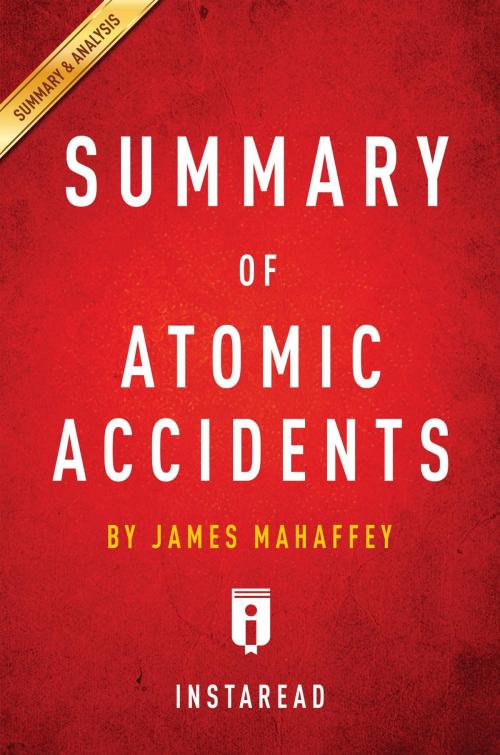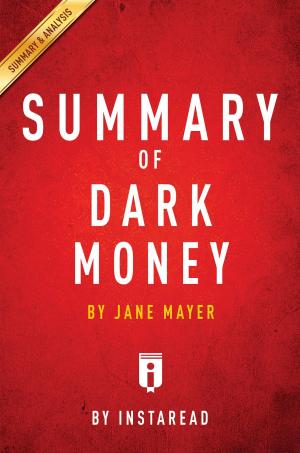Summary of Atomic Accidents
by James Mahaffey | Includes Analysis
Nonfiction, Science & Nature, Science, Physics, Radiation, Technology, Nuclear Energy, Other Sciences, History| Author: | Instaread Summaries | ISBN: | 9781683781967 |
| Publisher: | Instaread, Inc | Publication: | May 17, 2016 |
| Imprint: | Instaread, Inc | Language: | English |
| Author: | Instaread Summaries |
| ISBN: | 9781683781967 |
| Publisher: | Instaread, Inc |
| Publication: | May 17, 2016 |
| Imprint: | Instaread, Inc |
| Language: | English |
PLEASE NOTE: This is a summary of the book and NOT the original book.
Summary of Atomic Accidents by James Mahaffey | Includes Analysis
Inside this Instaread Summary:
• Overview of the entire book
• Introduction to the important people in the book
• Summary and analysis of all the chapters in the book
• Key Takeaways of the book
• A Reader's Perspective
Preview of this summary:
Introduction
Water in the form of steam has always intrigued and terrified people. Steam locomotives were
fascinating in their heyday. They tended to explode, crash into each other and run off the rails. Some
people were so afraid of this technology, they would not ride trains. However, everyone seemed to
love watching staged train crashes. This entertainment was popular from the 1890s until the 1930s.
One impresario of the staged crash was William “Bill” Crush, an agent for a Texas railroad. Forty
thousand people witnessed his first crash staged near Waco in 1896. Crush knew little about the
mechanics of steam engines, but insisted his hundred-mile- an-hour crash would be safe. He was
wrong. The resulting boiler explosion killed three and injured six. Another promoter, “Head-On” Joe
Connelly, was more successful. He staged seventy-three crashes without killing anyone. Unlike Crush,
he knew he had to keep the train speed down and hold spectators back.
The last staged crash of this type was in 1935. The fear of steam explosions never left the public’s
mind. When engineers began developing nuclear power, they believed that steam explosions were the
major challenge to safety. Although other methods were investigated, boiling water was, and still is, the
cheapest and most reliable way to collect energy produced at a power plant. Therefore, it was not a
challenge that could be worked around when designing a nuclear power plant. Additionally, steam from
a nuclear plant accident can spread radiation. In fact, during the Cold War, public fear of radiation was
more intense than fear of steam locomotives ever was.
Chapter 1
In November 1879, three hunters in the Ozarks found a cave filled with a weird vein of silvery-blue
metal. They had to flee when they became dizzy, disoriented and short of breath. One of the hunters,
Billy Henry, broke out in strange sores. He recovered and the story was forgotten.
In Europe, neon lights and X-rays were discovered as scientists unraveled the mysteries of the atom.
Radiology was discovered in the United States by Nikola Tesla, but he did not pursue practical
applications, so Wilhelm Rontgen of Germany got the honor of introducing radiology to the world.
Tesla decided to take another look and stuck his head in an X-ray beam for science. He developed
blisters and other wounds. He advised everyone to avoid radiation.
About the Author
With Instaread Summaries, you can get the summary of a book in 30 minutes or less. We read every
chapter, summarize and analyze it for your convenience.
PLEASE NOTE: This is a summary of the book and NOT the original book.
Summary of Atomic Accidents by James Mahaffey | Includes Analysis
Inside this Instaread Summary:
• Overview of the entire book
• Introduction to the important people in the book
• Summary and analysis of all the chapters in the book
• Key Takeaways of the book
• A Reader's Perspective
Preview of this summary:
Introduction
Water in the form of steam has always intrigued and terrified people. Steam locomotives were
fascinating in their heyday. They tended to explode, crash into each other and run off the rails. Some
people were so afraid of this technology, they would not ride trains. However, everyone seemed to
love watching staged train crashes. This entertainment was popular from the 1890s until the 1930s.
One impresario of the staged crash was William “Bill” Crush, an agent for a Texas railroad. Forty
thousand people witnessed his first crash staged near Waco in 1896. Crush knew little about the
mechanics of steam engines, but insisted his hundred-mile- an-hour crash would be safe. He was
wrong. The resulting boiler explosion killed three and injured six. Another promoter, “Head-On” Joe
Connelly, was more successful. He staged seventy-three crashes without killing anyone. Unlike Crush,
he knew he had to keep the train speed down and hold spectators back.
The last staged crash of this type was in 1935. The fear of steam explosions never left the public’s
mind. When engineers began developing nuclear power, they believed that steam explosions were the
major challenge to safety. Although other methods were investigated, boiling water was, and still is, the
cheapest and most reliable way to collect energy produced at a power plant. Therefore, it was not a
challenge that could be worked around when designing a nuclear power plant. Additionally, steam from
a nuclear plant accident can spread radiation. In fact, during the Cold War, public fear of radiation was
more intense than fear of steam locomotives ever was.
Chapter 1
In November 1879, three hunters in the Ozarks found a cave filled with a weird vein of silvery-blue
metal. They had to flee when they became dizzy, disoriented and short of breath. One of the hunters,
Billy Henry, broke out in strange sores. He recovered and the story was forgotten.
In Europe, neon lights and X-rays were discovered as scientists unraveled the mysteries of the atom.
Radiology was discovered in the United States by Nikola Tesla, but he did not pursue practical
applications, so Wilhelm Rontgen of Germany got the honor of introducing radiology to the world.
Tesla decided to take another look and stuck his head in an X-ray beam for science. He developed
blisters and other wounds. He advised everyone to avoid radiation.
About the Author
With Instaread Summaries, you can get the summary of a book in 30 minutes or less. We read every
chapter, summarize and analyze it for your convenience.















